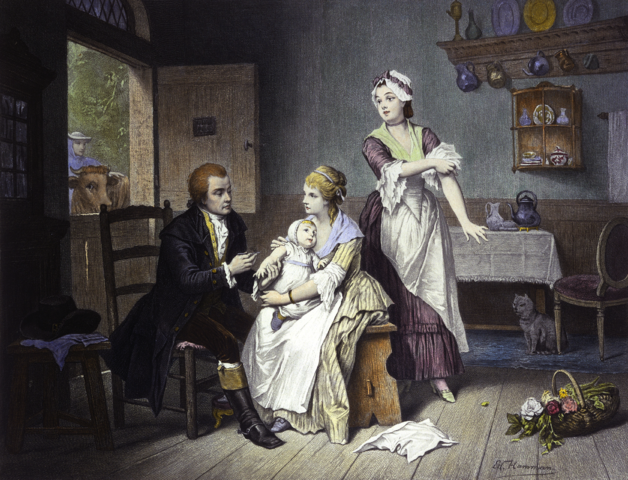
How Do Pandemics End?
Pandemics
On the 11th of March 2020, the WHO (World Health Organisation) declared the coronavirus, or Covid-19, a global pandemic. The WHO defines a pandemic as:
‘an epidemic occurring worldwide, or over a very wide area, crossing international boundaries and usually affecting a large number of people.’
Fifteen months on, coronavirus is still with us and has changed most of our lives beyond recognition. Face masks are now mandatory in businesses such as shops, banks and other indoor settings. Words such as ‘bubble,’ ‘social distancing,’ ‘lockdown,’ and ‘isolating’ have infiltrated our everyday vocabulary. Yet, we may, ever so cautiously, be beginning to feel that the darkest days are behind us. Tuesday the 1st of June saw zero Covid deaths recorded across England and Northern Ireland, with infection rates and hospitalisation rates having fallen rapidly since the winter. The roll-out of several successful vaccine programmes is thought to have contributed to the drop in cases and transmissions, with over 40 million adults having received the first dose and over half of us having received both doses.
Progress and Postponement
Monday the 17th of May marked another key stage in our roadmap out of lockdown. In a press conference the previous Friday, Prime Minister Boris Johnson confirmed that step three of England’s roadmap out of lockdown would go ahead as planned. Stage three has seen the hospitality sector welcome diners indoors, hotels have reopened, and people can even hug close family and friends once more. These changes feel like a step closer to normality and to the return of everyday activities that many have missed over the past year. However, SAGE, who have provided the British government with scientific advice throughout the pandemic, urged caution after a more transmissible Delta variant was found in the UK. Subsequently the PM warned this could compromise the fourth step – which would see a complete end to social distancing – on June 21st, and unfortunately, this has has come to pass.
These continual knock-backs and delays are difficult for keeping up our morale. Still, during moments of despair, it’s good to remind ourselves that most pandemics do come to an end or become endemic, meaning that we can contain the level of infection. Although the coronavirus pandemic is undoubtedly unique, perhaps by looking at the pandemics of the past we can gain a greater insight and understanding of how pandemics are ultimately brought under control.
Past Pandemics
The Plague (1347-1945)
A bacteria called yersinia pestis caused the plague. Although there have been several plague outbreaks over the years, the most devastating of all was the Black Death, a bubonic plague pandemic that brought tragedy across Europe and Asia. It was referred to as ‘the black death’ as symptoms included black buboes, or swelling, in the groin and armpits. It is thought that the disease was transmitted from rodents to humans, though some modern epidemiologists dispute this theory. The horror caused by the black death is unparalleled: an estimated 200 million people lost their lives. Many measures that we have used during the coronavirus pandemic, such as improved sanitation and quarantine, are thought to have reduced transmission. One myth that persists today is that The Great Fire of London (1666) wiped out the Black Death. This theory has been continually disproven by multiple sources, but remains a popular story. Although science has not eradicated the plague – there was an outbreak in Inner Mongolia just last year – only a fraction of those who used to die of it still die today. Increased access to antibiotics and strict isolation of those infected has subdued this particular pandemic.
Smallpox (1520-1980)
Smallpox first began to take hold in Mexico in 1520, after being brought in by Spanish settlers. Caused by variola minor, smallpox was responsible for the death of 300 million in the 20th century alone. Smallpox remains the only pandemic to be completely eradicated in history. Thanks to a staggering vaccination campaign, initially conceived by English physician Edward Jenner (The illustration above is a depiction of Jenner vaccinating his daughter), the 33rd World Health Assembly declared that smallpox had been eradicated in 1980. The elimination of smallpox remains one of the greatest scientific achievements in human history.
Influenza (1918-1920)
Known as the ‘Spanish Flu’ (despite historians agreeing that it didn’t originate in Spain) the 1918 flu was the most devastating in modern history, infecting up to 40% of individuals globally and killing up to 50 million. Spanish Flu was caused by the H1N1 virus, which had genes of avian origin, and was also responsible for the Swine Flu pandemic, which occurred during 2009 and 2010. Just as the world was coming to the end of World War 1, and the devastation it wrought on millions, an even deadlier killer was on the loose. In the words of Charles River Editors:
“However, as bad as things were, the worst was yet to come, for germs would kill more people than bullets. By the time that last fever broke and the last quarantine sign came down, the world had lost 3-5% of its population.”― Charles River Editors, The 1918 Spanish Flu Pandemic: The History and Legacy of the World’s Deadliest Influenza Outbreak
Although we are yet to witness an influenza pandemic as horrifying as The Spanish Flu, The Hong Kong flu of 1968 killed an estimated 1 million people. Swine Flu also infected an estimated 21% of the population in 2009. Influenza may have become less serious for the general population, but an estimated 650,000 still die each year of seasonal flu. This means that, excepting advances in science, the virus that causes influenza is unlikely to ever be eradicated.
The HIV/Aids Pandemic (1981-1997)
There remains some debate amongst scientific scholars on whether HIV/Aids was a global pandemic, with the WHO currently classifying it as a ‘global epidemic.’ In 1981, a large number of formerly healthy homosexual men began becoming seriously ill. The virus responsible for this was The Human Immunodeficiency Virus. Aids has claimed an estimated 32 million lives globally, with the WHO reporting that 690,000 individuals were still dying from Aids in 2019.
Although the virus was initially thought to affect gay men and drug users primarily, in 1983 the WHO also acknowledged that it could be transferred between heterosexual couples, via blood transfusions, and be passed on from infected mothers to their babies. Although the picture seems bleak, the world of science has made some incredible leaps since the 1980s, with treatment options and life-expectancy for sufferers now being better than ever before. The combination of Public Health Campaigns, increased education on how HIV/Aids is transmitted, and powerful antiretroviral treatment, means that many people who develop HIV go on to live long and healthy lives.
What Now?
Which raises the question – what can past pandemics, if anything, teach us about how the current Covid-19 pandemic might come to an end? As we’ve seen, all pandemics are unique and, except for Smallpox, none have been wiped out. Looking to the past cannot give us definite answers on the future of the pandemic, but it can certainly give us clues. It’s likely that the continued roll-out of a global vaccination programme, greater access to antiviral drugs, and enhanced hygiene, will play a significant role in ending this pandemic.
Although the first case of coronavirus was reported to the WHO in December 2019, the sudden onslaught of infections and deaths seemed to appear almost out of nowhere. Our return to normality will not happen overnight. But, as with previous pandemics, if we are patient, these cautious baby-steps out of lockdown will ultimately add up to a return to the freedom and spontaneity that we have all greatly missed.
